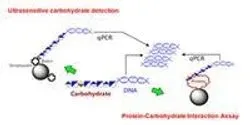Cell & Molecular Biology

Choosing an in vitro model system that faithfully represents the natural physiology of the cell being studied is fundamental to understanding its in vivo function. Cultures of primary cell isolates retain their physiology and karyotype after isolation, but cultures may be difficult to prepare and are susceptible to contamination.

Researchers at Rensselaer Polytechnic Institute have developed an ultrasensitive method for detecting sugar molecules — or glycans — coming from living organisms, a breakthrough that will make possible a more detailed understanding of cellular functions than either genetic or proteomic (the study of proteins) information can provide.

As Canadian scholar Marshall McLuhan famously noted, “The medium is the message.” So it is with cell culture, where media and feed or supplementation strategies have been responsible for more improvement in cell productivity and performance than any other factors.

Although cell culture is more than 100 years old, it has only been applied to the manufacture of biological drugs for about 25 years. Today mammalian cell culture is the workhorse production platform for most of biotech’s protein therapeutics and increasingly for cell- and virus-based vaccines.









